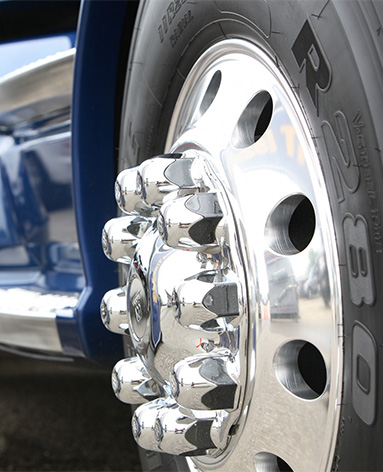Dec . 05, 2024 15:04 Back to list
brake drum vibration
Understanding Brake Drum Vibration and Its Implications
When it comes to vehicle braking systems, few components are as critical as the brake drum. This integral part, which houses the brake shoes, plays a significant role in ensuring vehicle safety and performance. However, one issue that often arises and demands attention is brake drum vibration. Understanding the causes, implications, and solutions related to brake drum vibration is crucial for both vehicle manufacturers and owners.
What is Brake Drum Vibration?
Brake drum vibration refers to the oscillating movements that occur within the brake drum during the application of brakes. This vibration can manifest as a noticeable shake or pulse in the vehicle, especially felt through the brake pedal or the steering wheel. Factors contributing to brake drum vibration include uneven wear of the brake lining, imbalances in the brake drum itself, or even external factors such as road conditions.
Causes of Brake Drum Vibration
Several factors can lead to brake drum vibration
1. Wear and Tear Over time, brake components experience wear that can lead to inconsistencies. If the brake shoes wear unevenly or the drum becomes warped, it can result in vibrations when brakes are applied.
2. Improper Installation Incorrect installation of the brake drum or associated components can create misalignments that cause vibration.
3. Material Defects Manufacturing defects in the brake drum, such as inconsistencies in material density or composition, can lead to vibrations.
4. Heat Distortion Excessive heat generated during braking can cause the brake drum to expand and warp, leading to vibrations. This is particularly common in heavy-duty braking situations or during prolonged use.
5. Road Conditions Poor road conditions, such as potholes or rough surfaces, can affect how braking systems respond, potentially leading to vibrations.
Implications of Brake Drum Vibration
Brake drum vibration has several implications for vehicle performance and safety
brake drum vibration

1. Decreased Safety The most critical concern with brake drum vibration is the effect on braking efficiency. Vibrations can reduce the effectiveness of brakes, increasing stopping distances and compromising safety.
2. Driver Comfort Vibrations felt through the steering wheel or brake pedal can be uncomfortable and distracting for the driver, affecting the overall driving experience.
3. Increased Wear on Components Persistent vibrations can lead to faster wear of various brake components, necessitating more frequent repairs and replacements, increasing overall maintenance costs.
4. Potential Damage In severe cases, consistent vibrations can cause damage to other vehicle components, including wheel bearings and suspension systems, leading to more significant repair issues.
Solutions to Brake Drum Vibration
Addressing brake drum vibration involves several approaches
1. Regular Inspections Routine maintenance checks of the braking system can help identify wear and imbalances before they lead to serious issues. This includes checking the brake drums for warping and ensuring brake shoes are properly adjusted.
2. Proper Installation Ensuring that brake components are installed correctly using the manufacturer’s specifications can help prevent misalignments that lead to vibrations.
3. Resurfacing or Replacing Drums If vibrations are detected, the brake drums may need to be resurfaced to create a smooth contact surface or replaced entirely if they are excessively worn or damaged.
4. Using Quality Components Investing in high-quality replacement parts can minimize the risk of material defects and inconsistencies that contribute to vibration.
5. Adjusting Driving Habits Avoiding aggressive braking and maintaining appropriate speeds can help reduce heat buildup in the brake system, minimizing the likelihood of warping.
Conclusion
Brake drum vibration is a multifaceted issue that can significantly impact vehicle safety and performance. By understanding the causes and implications of this problem, vehicle owners and technicians can take proactive steps to mitigate vibrations, ensuring that braking systems function optimally and safely. Regular maintenance, proper installation practices, and attention to driving habits are crucial in addressing and preventing brake drum vibration, ultimately contributing to a safer driving experience.
-
Brake Drum Man - High-Quality Drum Brake Drums & Brake Shoes for Reliable Performance
NewsJun.24,2025
-
High-Quality Brake Drum Kamaz – Durable Drum Brake Drum & Brake Shoe Replacement
NewsJun.10,2025
-
High-Quality Brake Drum Liza for Drum Brake Systems - Superior Durability and Performance
NewsJun.10,2025
-
High-Quality Brake Drum Kamaz – Durable Drum Brake Drum & Brake Shoe Solutions
NewsJun.10,2025
-
Durable Kamaz Brake Drums High-Performance Truck Parts
NewsJun.09,2025
-
Premium Brake Drum Maz Kit with Shoes Enhanced Braking
NewsJun.09,2025
